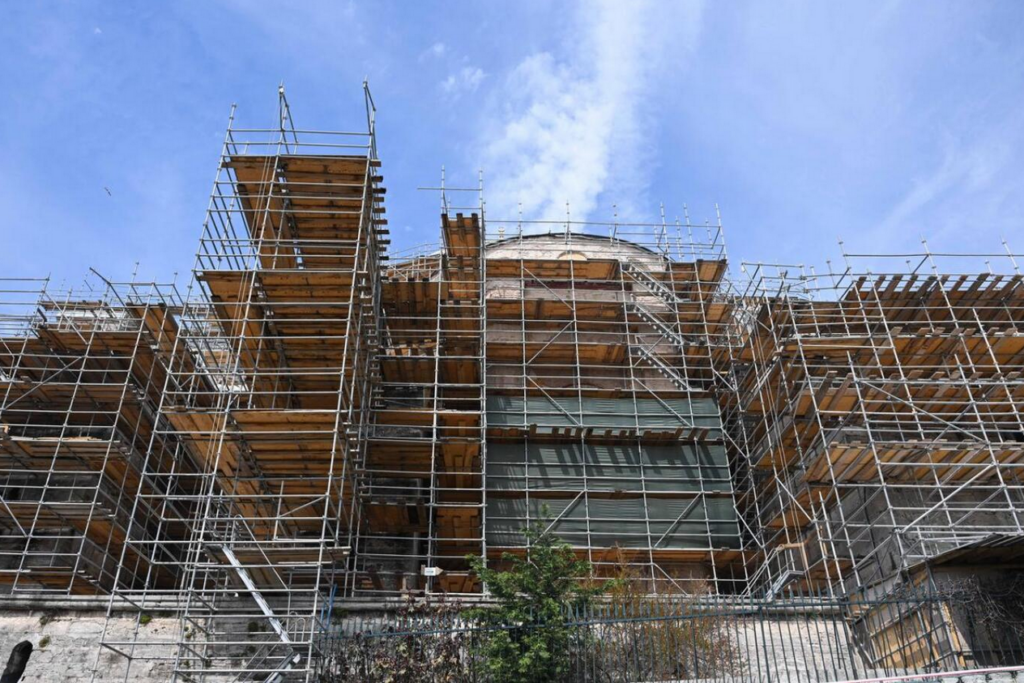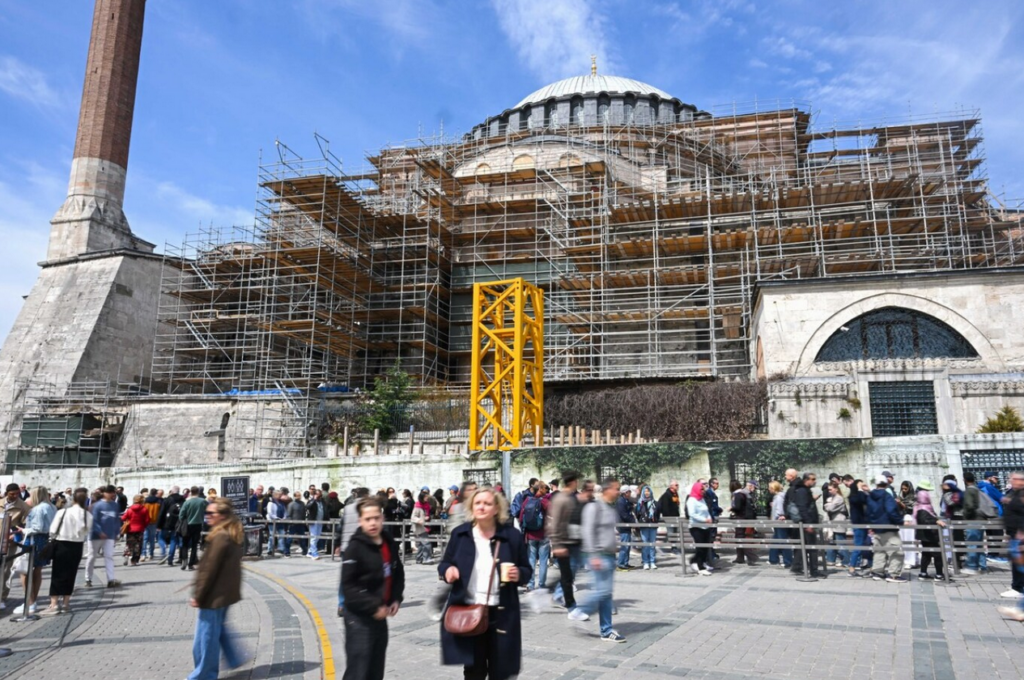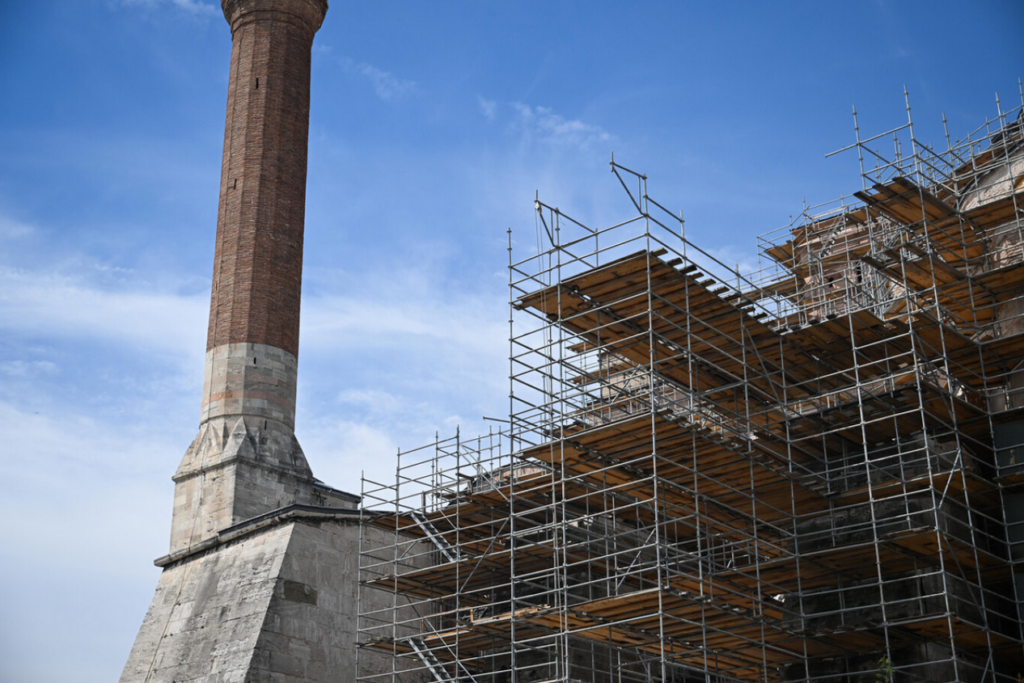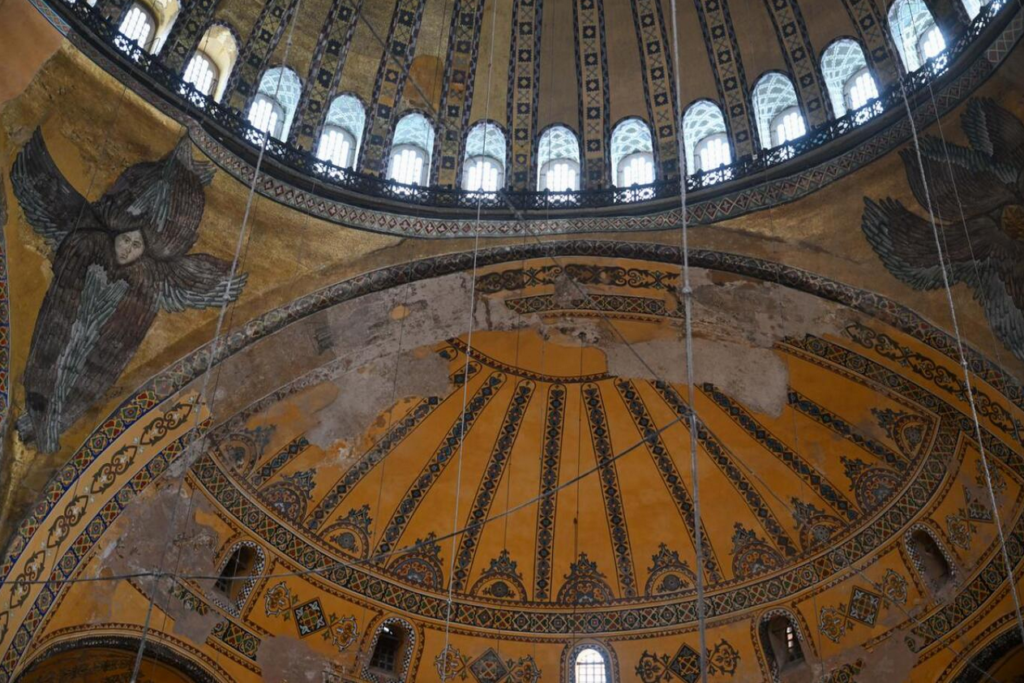Turkey has announced the start of the most extensive restoration process of the dome of Hagia Sophia, a project that is proceeding alongside other conservation work on the iconic monument that has been ongoing for a decade.
Turkey’s Minister of Tourism and Culture, Mehmet Nuri Ersoy, said it was the”largest restoration process in the history of the dome”, aimed at enhancing its resistance to earthquakes and preserving the original state of the structure with meticulous care.
Seismic protection and preservation of mosaics
The work, according to Turkish authorities, will be carried out from the outer surface of the dome so as not to affect the historic mosaics inside. The lead coatings will be removed, repaired or replaced, while the dome will be covered with a temporary steel structure and a special tarpaulin to protect it from the weather.
According to the design, a 43.5-meter-high steel platform will be placed on four main columns, allowing religious and restoration work to be carried out in parallel. “Prayer will continue, history will be preserved,” Ersoy said.
The project also includes scientific analysis of previous earthquake and fire damage, as well as large earthquake simulations to identify and strengthen the monument’s structurally weak points.

Open to the public during the works
The Hagia Sophia will remain accessible to worshippers and visitors throughout the restoration works. This makes the process technically more complex, scientists point out. No official timetable has been given for the completion of the works, as possible delays due to unforeseen circumstances are expected.

Historical route of the monument
Hagia Sophia was founded as a Christian church in 537 AD, under Justinian, and functioned as such until the Fall of Constantinople. It was converted into an Ottoman mosque and in 1935, under Kemal Ataturk, it became a museum. In 2020, following a decision by President Recep Tayyip Erdogan, it was returned to use as a mosque, a decision that caused international controversy and raised issues of heritage protection.

The new phase of restoration is part of a long-term plan by the Turkish government to promote and preserve Hagia Sophia, at a time when the monument continues to be at the center of both political and cultural debate, both inside and outside Turkey.

Ask me anything
Explore related questions





